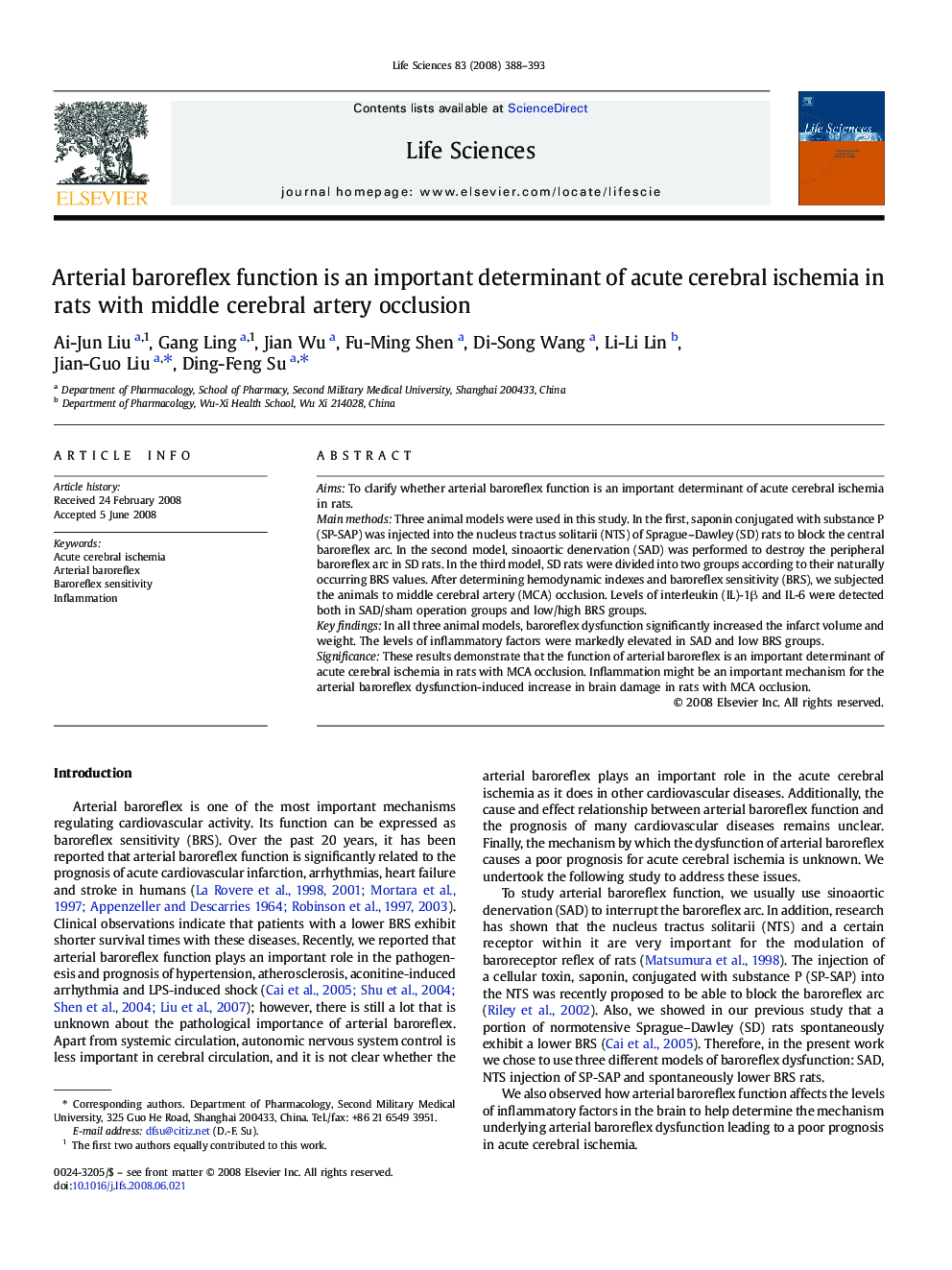| Article ID | Journal | Published Year | Pages | File Type |
|---|---|---|---|---|
| 2552371 | Life Sciences | 2008 | 6 Pages |
AimsTo clarify whether arterial baroreflex function is an important determinant of acute cerebral ischemia in rats.Main methodsThree animal models were used in this study. In the first, saponin conjugated with substance P (SP-SAP) was injected into the nucleus tractus solitarii (NTS) of Sprague–Dawley (SD) rats to block the central baroreflex arc. In the second model, sinoaortic denervation (SAD) was performed to destroy the peripheral baroreflex arc in SD rats. In the third model, SD rats were divided into two groups according to their naturally occurring BRS values. After determining hemodynamic indexes and baroreflex sensitivity (BRS), we subjected the animals to middle cerebral artery (MCA) occlusion. Levels of interleukin (IL)-1β and IL-6 were detected both in SAD/sham operation groups and low/high BRS groups.Key findingsIn all three animal models, baroreflex dysfunction significantly increased the infarct volume and weight. The levels of inflammatory factors were markedly elevated in SAD and low BRS groups.SignificanceThese results demonstrate that the function of arterial baroreflex is an important determinant of acute cerebral ischemia in rats with MCA occlusion. Inflammation might be an important mechanism for the arterial baroreflex dysfunction-induced increase in brain damage in rats with MCA occlusion.
